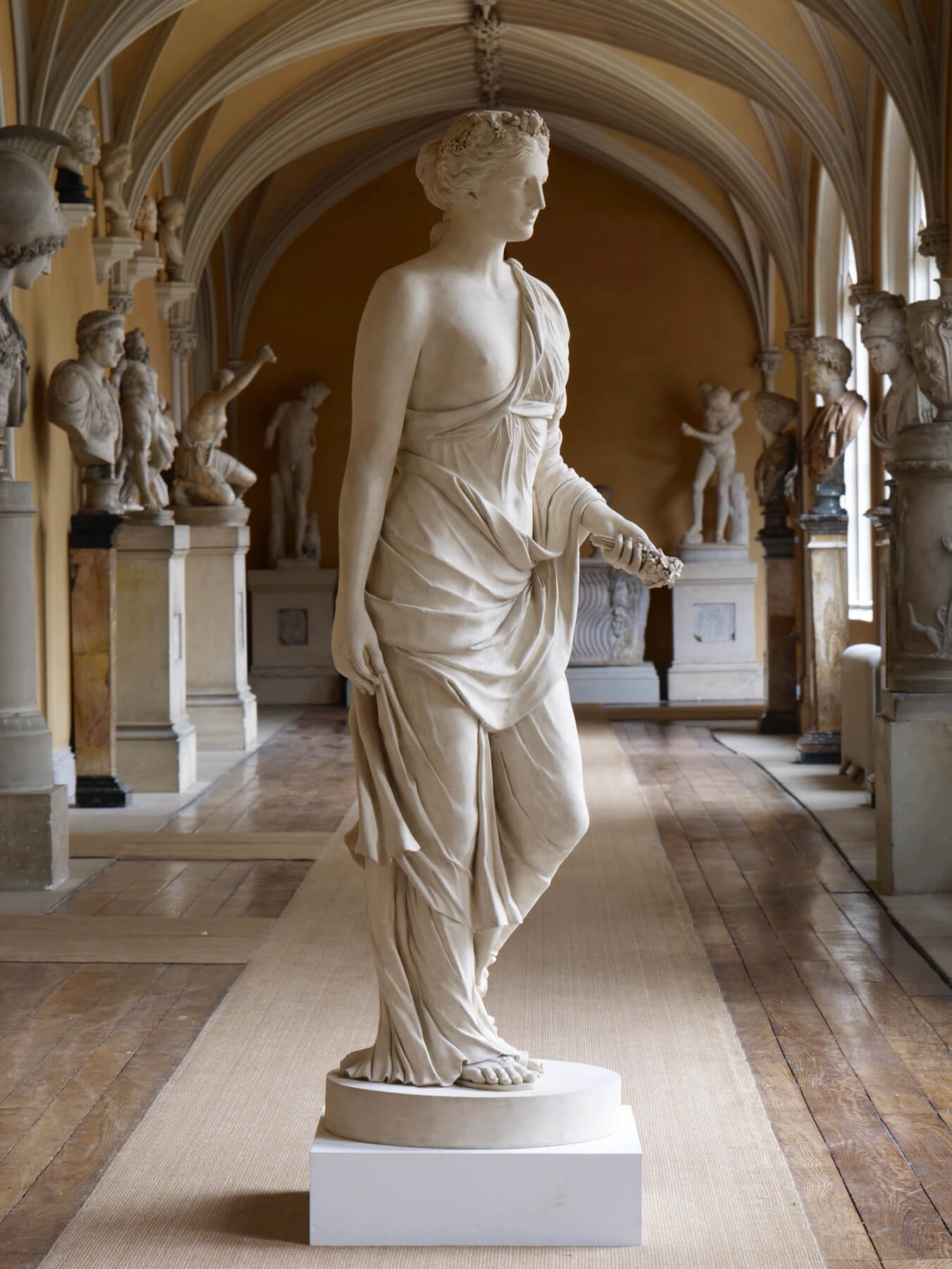In Georgian London, when men ran the industries and art was all about marble and bronze, a woman named Eleanor Coade created something remarkable.
She called it Coade Stone, and it was built to last.
A legacy. Her invention would cradle the seasons in sculptural form.
The Alchemy of Coade Stone
In 1769, Eleanor Coade, then 36 and unmarried, took over a failing artificial stone factory in Lambeth. The business had been run by Daniel Pincot, but within two years, she dismissed him for falsely claiming ownership, and from that moment on, Eleanor became the sole force behind what would become Coade’s Artificial Stone Manufactory.
She didn’t invent artificial stone outright—others had tried for decades—but she perfected it.
Her formula, kept secret for over a century, blended ball clay, crushed flint, quartz, soda-lime glass, and pre-fired grog. Fired at over 1,100°C for four days, the result was a ceramic stone so durable and detailed that it could mimic marble, withstand frost, and hold its shape for centuries.
She called it Lithodipyra, meaning ‘stone fired twice’. The world called it Coade Stone.
The Genius Behind the Stone
Eleanor Coade was a visionary entrepreneur. She hired the finest sculptors of her day, including John Bacon and Joseph Panzetta, to model her wares.
She opened a showroom near Westminster Bridge and published a catalogue of over 700 designs: urns, busts, coats of arms, fountains, and allegorical figures.
Her clients included George III, Robert Adam, John Nash, and Sir John Soane. Coade stone adorned St George’s Chapel, Buckingham Palace, the Royal Naval College, and countless gardens across Britain.
Cultural Canvas is a reader-supported publication. Every like, comment, share, and donation helps us grow—your support truly matters!
And among her most lyrical creations: the Four Seasons sculptures.
Commissioned in the early 19th century, the Four Seasons statues were crafted in Coade stone to represent Spring, Summer, Autumn, and Winter—each a classical female figure bearing the symbols of her time:
Spring: A young woman with a small bouquet, and her hair adorned with blossoms.
Summer: A mature figure holding a sheaf of wheat, crowned with golden strands.
Autumn: A harvest bearer with grapes and fruits.
Winter: Cloaked in heavy drapery, hooded against the cold.
These figures weren’t just decorative—they were philosophical. They shared the same face, suggesting unity across change. They were installed at Buckingham Palace in the 1820s, a testament to Coade’s enduring appeal.
After Eleanor’s death in 1821, her factory was taken over by William Croggon, who continued production until the 1830s. But the secret of Coade stone was lost—until the late 20th century, when researchers reverse-engineered the formula.
Today, Coade stone is being revived!
At Croome, the National Trust commissioned artist Faye Claridge to reimagine the Four Seasons in 2023.
Eleanor Coade defied the norms of her time. She ran a successful business for over 50 years, never married, and left her wealth to charity schools and women—stipulating that husbands could not touch the funds.
She was a pioneer in both art and autonomy.
Her Four Seasons sculptures remind us that beauty can be engineered, and that even in a world of change, it endures.
Missed our last stories? Read them here ↓
Don’t miss the newest episodes of our Classic Chapters podcast!
Thank you for being part of Cultural Canvas! If you love what we do, consider supporting us to keep it free for everyone. Stay inspired and see you in the next post!









